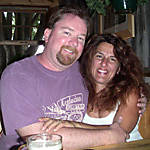Go to modelshipwrights.com for the current dynamic site!
1⁄350Building the DKM Graf Spee
The Model…
I thought I would share my build of this model which is 1/350 scale and recently released by Academy Models from Korea. This model has an interesting history and many of the old-timers will remember her fame from "The Battle of the River Plate".
The Graf Spee was one of Germanys fabled pocket battleships. Conceived in 1928 these armored ships were built to comply with 1919 Versailles Treaty and limited to 10,000 tons. They carried massive 11- inch guns. The brilliantly engineered warships with dominant towers, new style diesel engines and eclectically welded hulls were an enigma to their enemies.
In August 1939 the Graf Spee under the command of Captain Hans Langsdorff the ship embarked on a journey where it sank 9 British vessels.
It was on this voyage that the ship encountered the British warships Exeter Ajax and Achilles. A deadly battle took place. Serious damage was had by all ships and the Graf Spee with damage and dead and wounded crew made for Montevideo in Argentina. Believing that superior forces were waiting at the entrance to the river Captain Langsdorff sent his sailors ashore and scuttled the battleship.
This was regarded by some as a heroic deed saving his crew. He returned to shore, reported his action to the Admiralty, and then shot himself. Just a brief history note on the battle of the River Plate.
Now to work…
The hull came in two halves and joined without trouble .There was additional false bottoms so the model could be waterline if desired.
I installed these sections as they were there and I thought that they would give some strength to the hull.
moving on…
After the hull join was secure I then proceeded to wash the hull and all the parts in dish soap and warm water to remove any release agent that may have been present on the moldings as this will often give you a rejection of paint and glue.The hull was painted with Lifecolour LC68 Light Grey and left to dry.
The deck of the battleship was wooden planks so I chose to paint the 3 deck pieces with Tamiya XF60 mixed with a little Tamiya XF59.
As soon as these sections were dry I then gave the decks a wash of Ivory black. This was made up of 10% Windsor & Newton Ivory black oil paint and 90% Turps.
I allowed this to settle in the cracks for a minute or two and then cleaned it off with a dry brush.
Hopefully this will simulate a laid caulked deck.
These were then dry fitted to the hull before final gluing.
Gluing the deck to the hull was a bit of a problem as at the centre there was a very small gap and if I made it neat then the hull would distort a little…..could have been my fault but I think not. I filled the small gap with putty. I am making these observations in the hope that it will help other builders of this model.
If I was building this model again I would glue a beam across the hull where the two decks join with sufficient width to glue each half securely. This would take the flexibility out of the mid section. When gluing the superstructures to the deck I found a bit of bounce when applying any pressure.
The other point I would like to make is that the railings are disappointing as they are out of scale …the deck holes do not correspond with the stanchions all the time.
I decided to leave their installation to last and not first as the instruction suggest. Perhaps in the near future aftermarket companies like White Ensign will come up with a photo etch set that will do the job better.
The rest of the model seems to go together well. The windows were filled in using a small black felt pen.
As each section is completed I spray it with a coat of Future floor polish to preserve the paint work.
When the entire model is complete it will be sprayed with Lifecolour LC 27 a clear matt to take the shine off the model.
The final superstructure for ship has been finished and the final step will be the rails. The stand that is supplied is also painted and ready to attach to the hull. It is not a very secure stand so I will make a varnished timber base so as to give it more support and glue it to it.
Finally the hull was detailed with Tamiya weathering chalks for the rust on the anchors as well as hull grime and soot along its length.





























